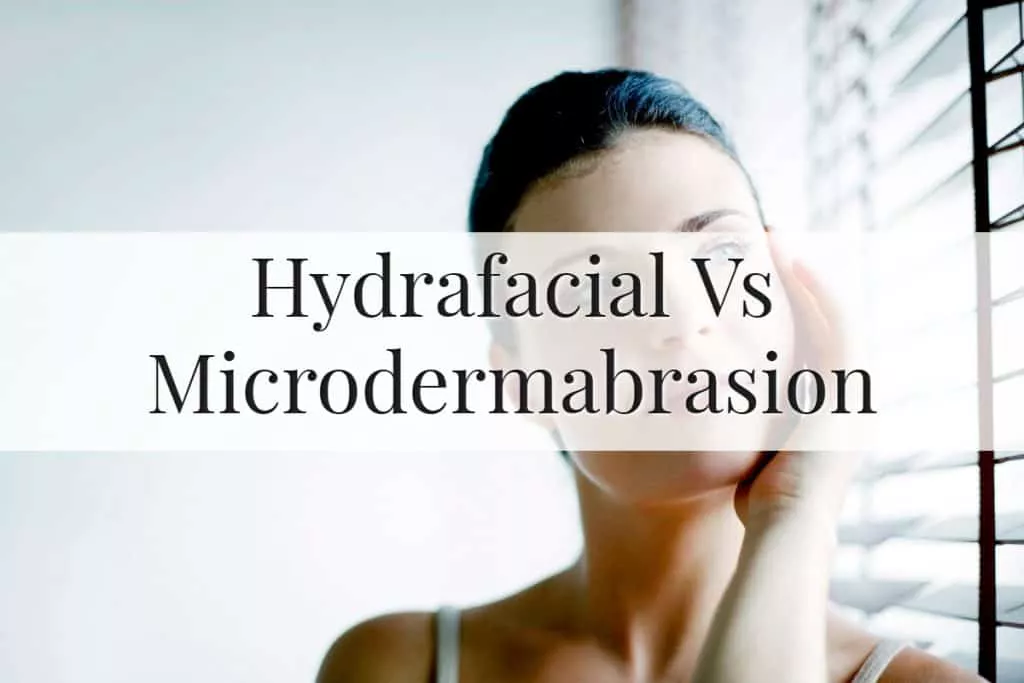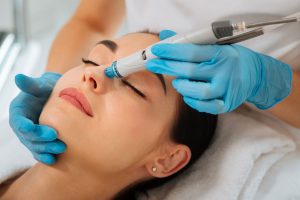
10 Best Products For Milia In Singapore For Every Budet
Editor’s Choice NEOSTRATA GLYCOLIC RENEWAL Smoothing Lotion CHECK LATEST PRICE 2nd Best Choice Peter Thomas
Great-looking, healthy skin isn’t necessarily limited to those graced with good genes. There are many steps you can take to achieve a clearer, more youthful, and radiant appearance. Important things such as wearing sunscreen and maintaining a routine of gentle cleansing and moisturizing should be done daily. Having said that, professional treatments are also helpful in delivering your skin the refinement and boost it requires.
If you’re wondering what’s the difference between HydraFacial vs Microdermabrasion—here is some information to help you decide which one would work best for you.

Hydrafacial is a multi-step treatment performed to invigorate skin that shows signs of sun damage and aging. This facial rejuvenation procedure works to address skin conditions such as enlarged or clogged pores, fine lines, wrinkles, dark spots, dry skin, mild acne, and dead skin cells. This 100% safe and gentle procedure also acts to soothe, moisturize, and revitalize the skin.
Hydrafacials involve cleansing and exfoliating the skin. Next, the esthetician will use a wand to suck out and extract unwanted impurities and blackheads from the skin. Then, a deep serum is applied, and antioxidants are released into the skin for hydration and softening. This pain-free treatment helps stimulate the production of collagen and reveal fresher-looking skin, all while addressing specific skin problems.

Microdermabrasion is another procedure used for facial rejuvenation. It combats skin conditions, including mild acne, fine lines, oily skin, and large pores. During the procedure, the epidermis or the topmost layer of your skin is removed using an exfoliating wand. The eliminated particles are also vacuumed away simultaneously.
Microdermabrasion is separated into two types: crystal and diamond microdermabrasion. The former uses force or friction to remove the epidermis, while the latter is more abrasive, sanding off the top layer of the skin. Regardless of the type you opt for, your esthetician will adjust the pressure, suction, and flow to suit your skin best.
If your schedule is often occupied, we recommend at-home microdermabrasion devices that’ll help you achieve similar results at your convenience. The only caveat is that you need to make sure you’re extra mindful when performing the procedure on yourself—follow the instructions carefully and don’t overdo it.

Many individuals find the non-invasive nature of Hydrafacial beneficial as it results in minimal to no downtime. While some may experience minor redness or a feeling of tightness of the skin, these symptoms are temporary and typically last no more than an hour, allowing you to go about your day after the procedure.
Microdermabrasion on the other hand, is considered a minimally invasive procedure, hence more side effects compared to Hydrafacial. If you have sensitive skin, microdermabrasion may cause redness, almost similar to that of a sunburn that can last up to hours or longer—depending on how invasive or deep your treatment was. There’s also the possibility of other reactions such as minor bruising around the eyes, dry skin, and sun sensitivity. But nothing a good moisturizer and an SPF can’t help.
Deciding whether to opt for a hydrafacial or microdermabrasion to achieve clear, glowing skin comes down to your particular skin concerns.
Individuals with acne should avoid microdermabrasion. If you have active breakouts, the procedure will only aggravate them further. With that being said, the hydrafacial gently buffs away impurities while infuses the skin with acne-fighting serums to target the core problem.
Microdermabrasion can lift your skin radiance and fade dark spots. To yield the best results, your esthetician may recommend combining the procedure with a course of chemical peels. Hydrafacial on the other hand, reveals a smooth, more even skin tone immediately after a treatment. As Hydrafacial combines multiple treatments in one sitting, it can combat pigmentation more effectively. The esthetician may recommend you to combine it with skin brightening serums to maintain a pigmentation-free, brighter complexion.
Sooner or later, there will be dissatisfaction on your skin you wish to address, be it removing impurities or to improve its overall appearance, hydrafacials and microdermabrasion are options well worth considering. Both are able to yield great results when it comes to achieving smooth, glowing skin. Which one works best for you would ultimately depend on your skin needs and goals. To determine the best choice, we still urge you to consult a professional like a dermatologist so you don’t damage your already healthy skin or aggravate your existing skin condition even further.

Be mindful of your words as they are impactful, which also explains why I am so fond of writing.

Editor’s Choice NEOSTRATA GLYCOLIC RENEWAL Smoothing Lotion CHECK LATEST PRICE 2nd Best Choice Peter Thomas

Editor’s Choice Coppertone Sport Continuous Sunscreen Spray Broad Spectrum SPF 50 CHECK LATEST PRICE 2nd
Last Updated on February 28, 2023 by Celine